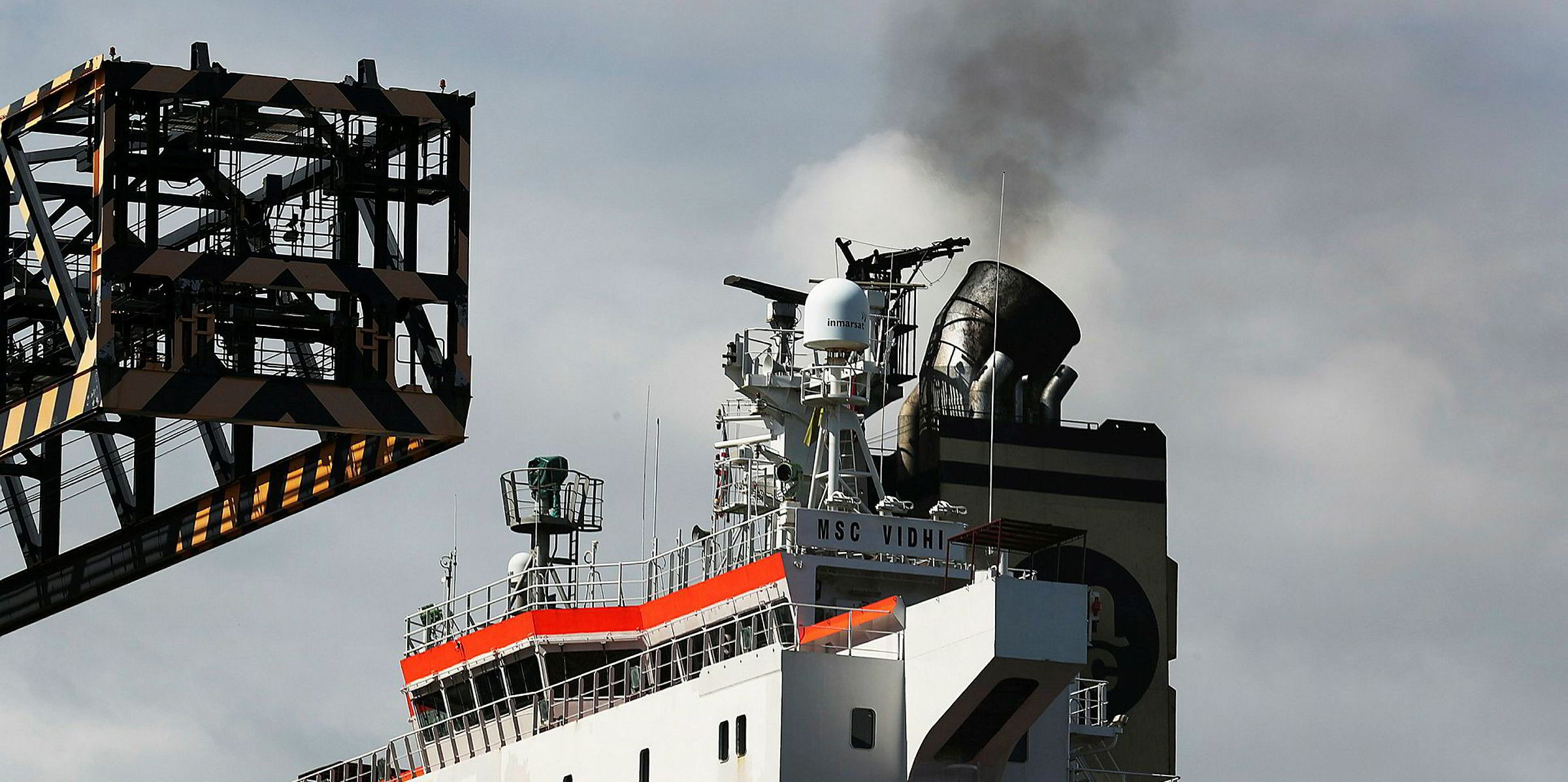Shipowners and environmentalists agree on one thing: the IMO should impose a global speed limit on ships to cut the industry’s carbon emissions. With that kind of alignment between green groups and business, you’d think we should just be able to go out and get it done.
After all, an industry is asking to be regulated. The tree-huggers and capitalists are at last united. It should be a no-brainer, right?
But it is not so simple, as seen last month when IMO delegates showed no interest in mandatory slow steaming as a way to push maritime transport towards its goal of reducing greenhouse gas (GHG) emissions by 40% by 2030 and 50% by 2050.
Speed limits are an easy sell for shipowners, since for the most part they would not be the ones bearing the brunt of the costs to slow vessels down. In fact, it would be quite profitable for them.
An analysis by Maritime Strategies International for this article found that a proposed 20% reduction in speed — the equivalent of two to three knots of lower speed — would lead to a significant change in ship productivity.
Surge in charter rates
This means a 13% to 15% change in the required supply of ships to meet tanker and bulker cargo needs, which in turn would push charter rates much higher.
A capesize bulker operating in a market in which it would be making $20,000 per day at normal speeds could see its charter rate surge to $80,000 per day in a lower-speed environment.
So it is no surprise that charterers — including commodities outfits and liner operators — would baulk at speed limits. And any industry that would profit from regulation would use its soapbox to trumpet the rule's virtues.
It is also no surprise that IMO member nations — many filled with commodities companies that would face higher shipping costs, and all populated by consumers who might be seen to face higher prices — would want to push back against speed limits.
However, there is ample reason for the IMO to keep mandatory slow steaming in the toolkit of possible measures for meeting its GHG goals.

Firstly, there is nothing like a hard rule to foster technological change that benefits the environment. Market factors and goodwill alone will not be enough to meet IMO targets.
The best thing shipping ever did for the environment because of market factors alone was to phase out coal a century ago. But after that, the industry kept scraping the bottom of the barrel for its fuel choice until the IMO finally put its foot down with the sulphur cap, which comes in next month.
Last week, IMO secretary general Kitack Lim called for “concrete action” on climate change. Taking such action soon in a package that includes speed limits in some form could accelerate incentives to invest in alternative fuel technologies.
Critics of mandatory slow steaming rightly argue that it would not be fair to shipowners that invest in less carbon-intensive tonnage.
But the measure need not apply to ships that can help meet standards without it. As shipowner Philippe Louis-Dreyfus explains in TradeWinds this week, speed limits — or a reduction in ships’ power — are proposed as a way to quickly tackle the carbon emissions of existing vessels built with lifespans meant to last decades.
The IMO discussions have turned their focus onto identifying operational and technical measures that could cut GHG emissions. Speed restrictions could complement such measures, encouraging investment and technical and operational measures by providing speed flexibility to those that adopt them.
Other critics of mandatory slow steaming argue that it will lead to the need to build more ships with a 25-year lifespan at a time when low-carbon technology is in its infancy.
That argument highlights why speed limits should not be taken off the table yet.
After all, if speed limits for the existing fleet can reduce the amount of GHGs that are pumped into the atmosphere per tonne mile of cargo shipped, they are worth studying.
If it is also true that speed limits might lead to more carbon output in the longer term, there is a reason to avoid the measure.
That question needs to be answered fast, so that decisive action can be taken on shipping’s carbon footprint.
Regulators will need the most effective toolkit of restrictions and incentives if the ambition of GHG reduction is to become a reality.






